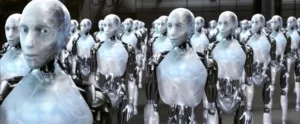Collaborative robots are now quite popular and easily acceptable in many industries. Both large and small entities that need to automate their processes faster and affordably go for the collaborative robot.
Universal Robots, is a leading collaborative robot manufacturer. They have in their stable a range of four different types of robots. They have the UR3, UR5, UR10, and the newest UR16. Each of these robots has different features and capabilities.
In this article, we will focus on the application of the UR5 robot.
Specialized tasks in the factory
The industrial robotic arm that is the UR5 cobot is capable of handling highly specialized tasks in any kind of factory. One of the most appropriate tasks that can be handled by this robot is the manufacture of electronics and their components.
The UR5 may look like a heavy hand. However, it comes with built-in force sensors and is able to be as gentle as possible where required. Like any other machine, all that is required is an easy calibration programming that instructs it on how to work.
Repetitive tasks
There are tasks that are highly repetitive for factory workers. They are tasks that require high levels of concentration over a long period of time.
Unlike human workers, the UR5 and other collaborative robots are well placed to handle such kind of tasks as all that is required is programming. Once they are provided with the right instructions, the robots will not need breaks from intense concentration on a single task over a period of time. They can work continuously without breaking down or need for maintenance.
Tasks that are harmful or difficult for human workers
On the factory floor, there are tasks that will prove to be difficult for human workers. These are tasks that can be easily assigned to robots. Tasks that require consistent bending to lift a package could lead to injuries. These are tasks that are easily automated and left to robots.
There are also tasks that include handling harmful and dangerous materials. Tasks such as painting expose human workers to harmful and toxic materials in the paint. With the correct external components, painting is a task that the UR5 can handle competently. This will leave your factory workers to focus on other complex and beneficial tasks.
Handle labor shortages
Collaborative robots are suitable for companies that find themselves unable to find the correct human resources for all their tasks. The manufacturing and agriculture industries are some of the industries that find it hard to employ enough human resources.
The UR5 can competently handle those tasks that lack human resources to fill. In the agriculture industry, for example, there are farms using the robots to milk their cows, plant seeds and also monitor plant and soil conditions. These robots have proved a valuable resource to ensure that the farms can carry on profitably in spite of the biting labor shortages.
Quality improvement tasks
When a company needs to improve the quality of their products, a collaborative robot is one of the solutions that they can go for.
Collaborative robots are highly accurate and precise. This ensures that a product is produced to its correct dimensions and thus help improve its likability and appeal. Accuracy and precision also help reduce wastage in the manufacturing process. This helps enhance production and profitability of the entity.
Further, robots can be used for inspection tasks. Enabled with machine vision capacities, the UR5 will quickly verify that the product shipped from the manufacturing process is as it should be.
Conclusion
Collaborative robots are the new frontier of the manufacturing age. They can handle as many tasks as they are equipped for. Further, they are quite affordable and any company regardless of size or income level can acquire one.
The UR5 on itself can be applied to a wide range of tasks. It will streamline all production processes in the factory and help improve the organization as a whole.








